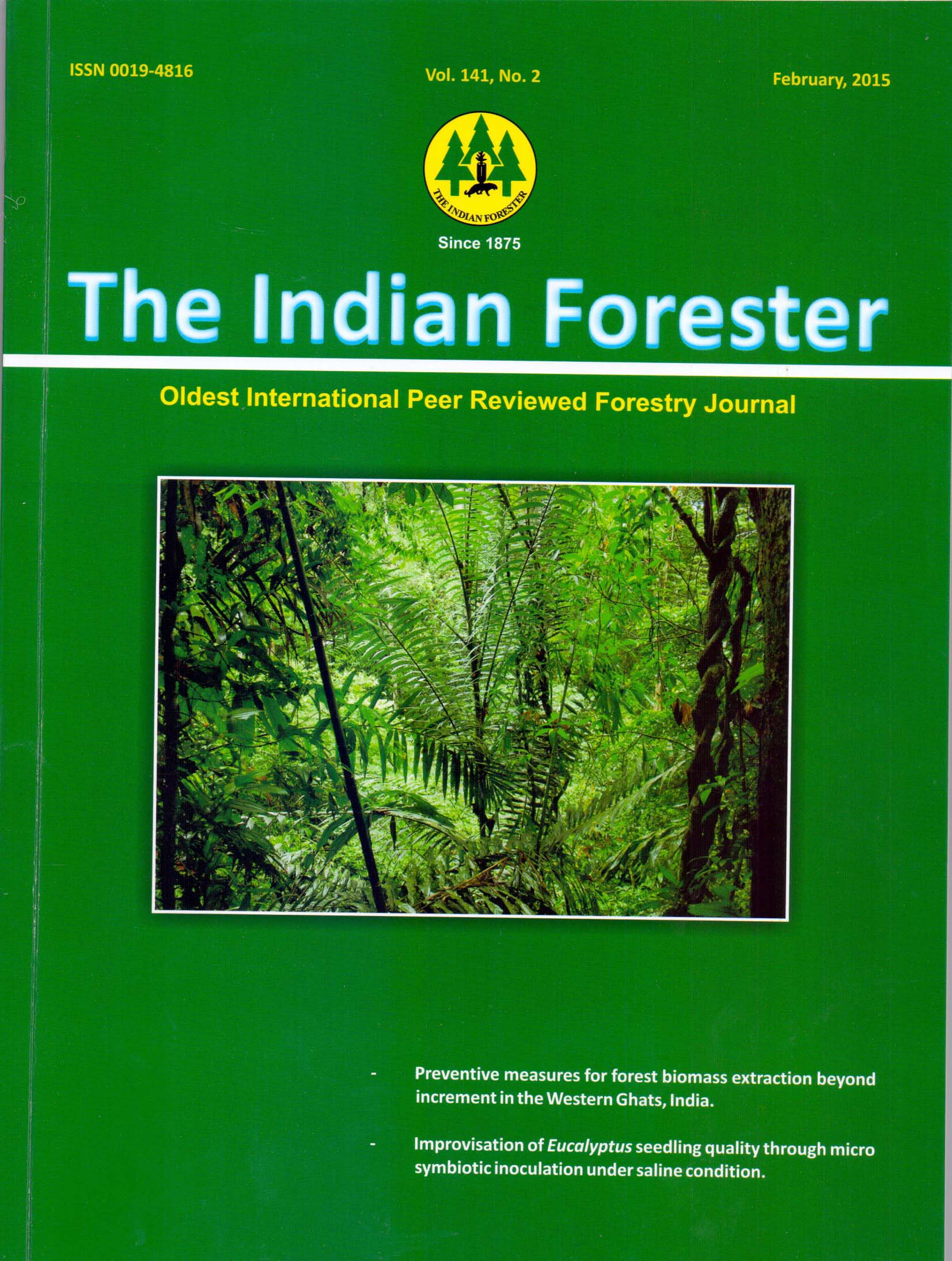Some Aspects of Risk Assessment in Forest Management Planning
DOI:
https://doi.org/10.36808/if/2015/v141i2/60654Keywords:
Potential Hazard, Risk, Forest Planning Model, Linear Programming, Optimization.Abstract
Uncertainty and multiple risk are typical aspects of forest management. Applications of risk analysis are surprisingly rare, in spite of the rich assortment of sophisticated forest planning tools that are available today. Forest scenario planning may reduce uncertainty in management outcomes by anticipating the future in a systematic way, thus reducing the likelihood of unexpected events. It can also improve the chance that future developments will agree with specified objectives. Numerous techniques are available for generating and evaluating scenarios of forest development. Some of them are limited to applications in simple forest production systems while others are suitable for any type of forest management. Risk is defined as the expected loss due to a particular hazard for a given area and reference period. An expected loss may be calculated as the product of the damage and its probability. Risk analysis, risk evaluation and risk management are formal procedures for quantifying, evaluating and managing risk within a given hazard domain. Applications of risk analysis in forest management planning are scanty and greater emphasis needs to be placed on hazard prediction. This article discusses some aspects of risk analysis.References
Albert M. (1999). Analyse der eingriffsbedingten Strukturveranderung und Durchforstungsmodellierung in Mischbestanden. Dissertation, Universitat Gottingen. Hainholz-Verlag, Band 6, 201 p.
Alho J. and Kangas J. (1997). Analyzing uncertainties in experts' opinions of forest plan performance, Forest Science, 43:521-528.
Banse G. (1996). Herkunft and Anspruch der Risikoforschung. In: Risikoforschung zwischen disziplinaritat und Interdisziplinaritat (Banse, G., Ed.), Berlin, pp. 15-27.
Birot Y. and Gollier C. (2001). Risk assessment, management and sharing in forestry, with special emphasis on wind storms. Paper presented at the 14th Convocation of Academies of Engineering and Technological Sciences (CAETS). Espoo, Finland, June 2001.
Braess P. (1960). Versicherung und Risiko. Gabler, Wiesbaden.
Bredemeier M., Lamersdorf N., Schulte-Bisping H. and Lupke B.V. (2001). Risk appraisal for forest management with respect to site quality and environmental changes. In: Risk Analysis in Forest Management (Gadow, K.v., Ed.), Kluwer Academic Publishers, Dordrecht, pp.21-48.
Gadow K.V. (2000). Evaluating Risk in Forest Planning Models. Silva Fennica, 34 (2):181-191.
Gardiner B.A. and Quine C.P. (2000). Management of forests to reduce the risk of abiotic damage - a review with particular reference to the effects of strong winds, Forest Ecology and Management, 135:261-277.
Gonzalez J.R., Palahi M., Trasobares A. and Pukkala T. (2006). A fire risk model for forest stands in Catalonia (north-east of Spain), Annals of Forest Science, 63:169-173.
Hollenstein K. (1997). Analyse, Bewertung und Management von Naturrisiken. HochschulverlagAG der ETH Zurich, 191 p.
Kangas J., Loikkanen T., Pukkala T. and Pykalainen J. (1996). A Participatory approach to tactical forest planning, Acta Forestalia Fennica, 251. 24 p.
Kangas S.A. and Kangas J. (2001). Forest management planning for maintaining the viability of wildlife populations. In: Risk Analysis in Forest Management(Gadow, K.v., Ed.), Kluwer Academic Publishers, Dordrecht, pp. 1-20.
Kroeger W. (1992). Grundzuge der Sicherheit technischer Systeme. Lecture notes, ETHZ Zurich.
Kouba J. (1989). The theory of an estimate of the development of calamities and of management of the process of forest adjustment to normal forest, Lesnictvi, 35 (10):925-944.
Mckelvey R. (1996). Viability analysis of endangered species: a decision theoretic perspective, Ecological Modeling, 92:193-207.
Pukkala T. and Kangas J. (1993). A heuristic optimization method for forest planning and decision-making, Scandinavian Journal of Forest Research, 8:560-570.
Saaty T.L. (1977). A scaling method for priorities in hierarchical structures, Journal of Mathematical Psychology, 15:234-281.
Thomasius H. (1988). Stabilitat naturlicher und kunstlicher Waldokosysteme sowie deren Beeinflussbarkeit durch forstliche Massnahmen, Allgemeine Forstzeitschrift, 43:1037-1043, 1064-1068.
U.N. (1992). Internationally agreed glossary of basic terms related to disaster management. United Nations Department of Humanitarian Affairs, Geneva.
Waldherr M. (1997). Risikoverlusteund Erntealter, AFZ/Der Wald, 206-207.
Downloads
Downloads
Published
How to Cite
Issue
Section
License
Unless otherwise stated, copyright or similar rights in all materials presented on the site, including graphical images, are owned by Indian Forester.





